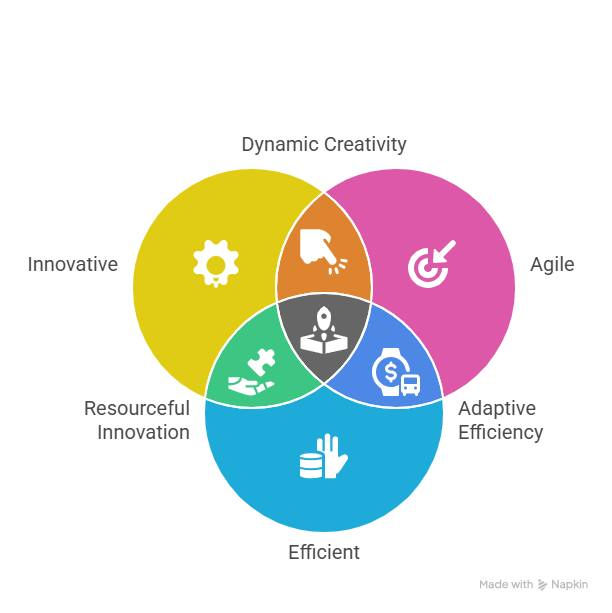The Strategic Imperative: How Technology Architecture Drives Business Success
- Boris Bauer
- Aug 3
- 4 min read
The Evolution of Technology's Role in Modern Business
Technology has fundamentally transformed from a support function to a strategic driver of business value. Organizations across industries now recognize that their technology infrastructure directly impacts competitive positioning, customer relationships, and long-term growth prospects. This shift requires business leaders to rethink how they approach technology investments and architectural decisions.
The most successful companies treat technology architecture as a foundational business asset rather than merely an operational necessity. They understand that the underlying systems, processes, and frameworks supporting their digital initiatives determine their ability to innovate, scale, and respond to market changes effectively.
The Hidden Infrastructure Behind Digital Success
When customers interact with a company's digital touchpoints, they experience only the visible layer of a much more complex ecosystem. Behind every seamless mobile app transaction or personalized website experience lies a sophisticated architecture of databases, APIs, security protocols, and integration layers working in concert.
Consider how leading retailers have transformed their operations by connecting online and offline channels through unified commerce platforms.
These organizations didn't achieve omnichannel excellence through front-end design alone- they rebuilt their underlying systems to share data, inventory, and customer insights across all touchpoints in real-time.

The iceberg analogy applies perfectly here: while customers see the tip representing user interfaces and digital experiences, the substantial mass below the surface, comprising data management systems, security frameworks, and integration architectures, enables everything visible above.
Leadership in the Digital Age
Modern technology leadership extends far beyond traditional IT management. Today's Chief Information Officers and Chief Technology Officers function as strategic business partners who translate technological capabilities into competitive advantages. Their success depends on understanding both technical possibilities and business objectives.
Many organizations are also discovering the value of specialized marketing technology expertise through fractional Chief Marketing Officers or digital consultants. These professionals bring deep knowledge of marketing systems, customer data platforms, and automation tools that complement technical leadership. This combination creates a powerful dynamic where technical capability meets market insight.
The most effective technology leaders focus on building bridges between departments, ensuring that technical decisions support broader business goals while maintaining system reliability and security standards.
Navigating Technical Debt and Innovation
One of the greatest challenges facing established organizations is balancing the need for innovation with the reality of existing system limitations. Technical debt—the cumulative effect of shortcuts, outdated systems, and architectural compromises—can significantly constrain an organization's ability to adapt and grow.
Smart companies approach this challenge systematically. Rather than attempting wholesale system replacements, they implement modernization strategies that gradually improve architectural foundations while maintaining business continuity. This might involve containerizing applications, implementing API layers to connect disparate systems, or migrating specific workloads to cloud platforms.
The key is treating architectural improvement as an ongoing investment rather than a one-time project. Organizations that consistently allocate resources to technical infrastructure maintenance and enhancement position themselves to capitalize on new opportunities more quickly than competitors struggling with legacy constraints.
Cultivating Technology-Enabled Culture
Technology architecture alone cannot drive business success—it requires a culture that embraces change, values continuous learning, and supports experimentation. The most resilient organizations foster environments where teams feel empowered to identify improvement opportunities and propose innovative solutions.
This cultural foundation becomes particularly important as businesses adopt new technologies like artificial intelligence, machine learning, and advanced analytics. Success with these tools depends not just on technical implementation but on organizational readiness to incorporate insights into decision-making processes.
Effective technology cultures balance innovation with pragmatism, encouraging exploration while maintaining focus on business outcomes. They invest in developing technical capabilities across the organization rather than concentrating expertise within traditional IT boundaries.
The Compounding Returns of Strong Architecture
Companies that invest consistently in robust technology architecture create compounding advantages over time. Strong foundational systems enable faster deployment of new capabilities, more reliable performance during peak demand periods, and greater flexibility to respond to changing market conditions.
These benefits extend beyond operational efficiency to strategic opportunity creation. Organizations with scalable, secure, and well-integrated technology platforms can pursue new business models, enter adjacent markets, and form strategic partnerships more readily than those constrained by technical limitations.
The investment required to build and maintain excellent technology architecture is significant, but the alternative—operating with fragmented, unreliable, or inflexible systems—ultimately proves far more costly in terms of missed opportunities and competitive disadvantage.
Architecture as Strategic Foundation
In our digital driven economy, technology architecture represents one of the most important strategic assets an organization can develop. It determines not only what is possible today but what will be achievable tomorrow as market conditions evolve and new opportunities emerge.
The most successful companies recognize this reality and make corresponding investments in both technical infrastructure and organizational capabilities. They understand that sustainable competitive advantage increasingly depends on the quality of underlying systems and the speed with which organizations can translate strategic vision into operational reality.
Building exceptional technology architecture requires commitment, expertise, and patience. However, organizations that make this investment position themselves to thrive in an environment where technological capability increasingly determines business success. The question is not whether to invest in strong technology architecture, but how quickly organizations can build the foundations necessary for long-term prosperity.




Comments